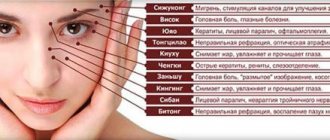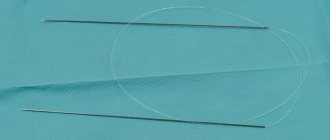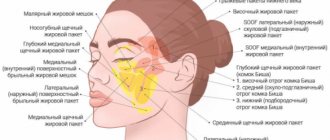How is it done, where to do it, what is the price?
A mid-zone lift affects the part of the face from the lower eyelid to the level of the wings of the nose. The main signs of aging here are bags under the eyes, ptosis of soft tissues in the cheekbones and cheeks, and nasolabial folds.
These problems arise not only at older ages; sometimes the prolapse of soft tissues (ptosis) in the malar zone becomes noticeable already at 30-40 years of age. They are often caused by congenital anatomical features, or, for example, significant weight loss.
Do you want to look fresh and rejuvenated? Get rid of the constantly tired, exhausted expression? Pay attention to the possibilities of lifting the central area of the face. This can be done, for example, using the check-lifting method.
An example of the rejuvenation effect after a check lift can be seen in this before and after photo. Please note that there are no visible signs of surgery on the face. Surgical midface lift can be done using other methods (depending on the goals and indications), so the price of the operation is determined individually for each patient.
Indications and contraindications
A midface lift is most effective at ages 34-45, provided there is not a large amount of fat deposits. It is indicated for correction:
- pronounced nasolabial zone;
- bags under the eyes;
- deep nasolacrimal folds;
- flabby cheek areas;
- deformation of the eyelids after unsuccessful plastic procedures;
- drooping corners of the eyes and lips;
- fat deposits in the cheek area.
On this topic
- Lifting
Short scar facelift
- Editorial board of Plasticology.ru
- October 21, 2020
Before performing plastic surgery, the doctor must know whether the patient has the following contraindications:
- mechanical damage to the face;
- neoplasms in the operated area;
- acute inflammatory processes;
- liver and kidney diseases
- diabetes mellitus;
- mental illness;
- cardiovascular problems ;
- menses.
The most popular method of lifting the midface area is CHECK LIFTING.
This mini-plasty of the midface is performed under general anesthesia and takes approximately 1-2 hours. Small incisions are placed on the lower eyelids along the lash line (as in lower blepharoplasty). Through these short (1-2 cm) incisions, access is made to the area of the cheekbones and cheeks, where the surgeon carries out the necessary manipulations, pulling the tissues to their original position (up), and then securely fixes them.
An important advantage of check-lifting is the use of very small incisions, which allow you to remove bags under the eyes and nasolabial folds and correct changes in the malar zone.
Through common mini-incisions, lower blepharoplasty and a full-fledged lift of the entire midface area are simultaneously performed! And there will be no noticeable seams!
Check-lifting
Check-lifting (or cheklift) is a modern technique for correcting the midface area, developed in 2004. Initially, the purpose of this operation was to correct the consequences of unsuccessful plastic surgery of the lower eyelid - to eliminate a complication called a “round eye” or inversion of the lower eyelid. The developed lifting technique turned out to be so effective and low-traumatic that today this operation has become one of the most popular methods for correcting age-related changes in the midface. Typically, a check-lift is combined with blepharoplasty of the lower eyelids, achieving rejuvenation of the entire middle part of the face from the molar area, cheekbones and cheeks to the nasolabial area.
This technique has a number of advantages over other lifting technologies:
- The operation is performed through single incisions along the edge of the lower eyelid (as in lower blepharoplasty). After the check-lift there are no additional scars left.
- This technique reduces the duration of the operation (up to 70 minutes) and minimizes the usual operational risks;
- Check-lifting is a non-invasive operation, so it is usually performed under local anesthesia (general anesthesia is used in rare cases, mainly at the request of the patient), and the recovery period is 10-14 days;
- Tissue tightening is carried out from the bottom up (and not diagonally to the temple, as with other lifting techniques). The tissues return to their original position (without displacement to the periphery), which ensures the most natural result;
- Despite the minimal invasiveness, check-lifting provides no less long-term effect than such a serious operation as a circular facelift (on average about 7 years).
- This method eliminates such an unpleasant complication as the “round eye” effect, which sometimes happens after conventional lower eyelid blepharoplasty.
However, for all its advantages, this operation is not an absolute panacea. Plastic surgery also has other modern techniques for plastic surgery of the midface. To select the correct lifting technique, many factors are always taken into account, including: individual structure, the severity of age-related changes and the goals that the patient sets for the plastic surgeon.
Photo: check-lifting and lifting of eyebrows and eyelids. Surgeon I.A. White.
Temporal lifting
Another method of lifting the midface is the temporal temporal lift. It is also performed under general anesthesia. This more complex and extensive operation lasts about three hours. Temporal lifting involves incisions in the temporal region and under the upper lip, after which deep detachment of the skin along with the periosteum is carried out in this area. Excess fat tissue is removed, all soft tissues are tightened and fixed. Temporal temporal lifting is used less frequently, since this more traumatic technique sets a slightly different, not suitable for everyone, direction of lifting. The tissues move not to where they moved from (up), but diagonally (from the corner of the mouth to the temple).
About the procedure
Mid-face lift (check-lift)
is a plastic surgery to rejuvenate the skin in the eyes, cheekbones and cheeks. The facial muscles of the middle third of the face are very mobile - this is one of the reasons for the rapid aging of the skin in this area and the skin tissue adjacent to it, including the skin around the eyes. In addition, with age, the volume of the cheek tissues is lost, the contours of the cheekbones are deformed, “tear troughs” (folds running from the inner corners of the eyes to the temples) and bags under the eyes are formed. Lifting the mid-face area eliminates external signs of skin aging, reduces sagging, smoothes wrinkles, and returns the eye contour and cheekbone area to its original shape.
Midface lift, price in Moscow from Professor Bely
Before performing an operation, Dr. Bely must personally meet with the patient to find out his wishes, conduct an examination, and draw up a plan for the operation. This is the only way to determine which midface lift is right for you and to name its cost.
Professor Igor Anatolyevich Bely has already completed more than a thousand operations and the same number of satisfied patients who received the desired result.
Helpful information:
- If you are planning a midface lift, we recommend that you look at the Before and After photos of this procedure on our website.
- If you are interested in a midface lift from Dr. Bely, you can see the preliminary cost in the price section.
- You can make an appointment for a face-to-face consultation with Professor Igor Anatolyevich by phone5, through instant messengers:, or online on the website.
Contraindications to supraperiosteal midface lift:
- Diabetes
- Oncological diseases
- Chronic diseases in the acute stage
- Presence of any acute infections
- Bleeding disorder
- Endocrine system diseases
- High blood pressure
- Serious cardiovascular disease
- Blood diseases (HIV infection)
- Presence of serious skin damage in the area of the procedure
- Pregnancy and breastfeeding period
- Mental disorders and epilepsy
Make an appointment:
— What effect is achieved with forehead endoscopy?
Raising the eyebrows, raising the corners of the eyes. The middle zone is slightly tightened.
— Is it possible to achieve the same results without surgery, for example, with Botox injections?
Botox can raise eyebrows, but they are raised only at one point and turn out to be a “house”. In addition, botulinum toxin gives a temporary effect and must be repeated every six months.
— When doing a forehead lift, do you use endotins or screws?
Both. When the eyebrows are “heavy” - low, masculine, asymmetrical, powerful muscles in the eyebrow area - then I use endotins. But mostly screws. There is one more point here: when installing screws, the eyebrows need to be tightened a little (make a slight hypercorrection), since within two months they “sit down,” that is, they droop a little. During this period, a person walks as if with a surprised look.
— Is it possible to combine upper eyelid surgery and forehead endoscopy?
Can. But I prefer to separate these operations. First I do the forehead. After the forehead is raised, the excess skin that remains on the eyelids no longer looks so heavy. A person sees a clear effect, and approximately 80% of patients stop at this stage and decide not to have blepharoplasty.
And the second point: an upper eyelid that is too “empty” looks unnatural. When there is a slight excess of tissue there, it is more natural. Therefore, the majority of patients undergo forehead endoscopy and come for blepharoplasty at an older age. Technically, upper blepharoplasty is not a complicated operation. But you need to feel it: understand exactly how much needs to be removed so that the upper eyelids look natural.
— And if you separate these operations, then with what break should you do them?
2-3 months after forehead endoscopy, upper blepharoplasty can be done.
— How long does the effect last after endoscopy of the forehead and midface?
The effect after a forehead lift lasts on average 10-15 years. The middle zone of the face is about 7-10 years. But everything very much depends on the patient’s lifestyle: weight changes, stress, etc.
— What is temparoplasty?
Temparoplasty is a temple lift. With this operation you can lift the corner of the eye and the outer part of the eyebrow. Temparoplasty is part of forehead endoscopy surgery. In our clinic, we can provide it either as a separate service or as part of the main forehead lift operation.
Valery Grigorievich, thank you for the interview! We are glad that we were able to talk in such detail about endoscopic operations. Today they are in great demand.
Indications for the procedure
The middle third of the face is the area where facial wrinkles, so hated by the fair sex, are concentrated. Therefore, one of the main indications for plastic surgery of the middle third is the desire for aesthetic changes in appearance.
Correction is also possible if, as a result of age-related changes:
- flabbiness of the skin is observed
- face looks gloomy
- deep wrinkles are observed in areas of active facial expressions
- brow lift required
- pronounced ptosis on the forehead
- nasolabial folds stand out noticeably
- pronounced bags under the eyes
- there is drooping of the corners of the eyes
- there is a sinking of the cheeks
Details of the mid-face lift
The recommended age for the procedure is 35 – 50 years. A midface lift is performed using general anesthesia; the operation lasts one and a half to two hours. Skin incisions are made under the eyelashes of the lower eyelid, after which a set of necessary corrective manipulations is carried out: displacement of muscles and fixation in the desired position, redistribution of subcutaneous fat, excision of excess skin tissue. Fixation of muscles and skin is carried out by introducing endotins
(plates for gentle skin tightening, 3-4 mm in size, have notches that fix endotins on muscles and bone tissue; are made from high-tech biocompatible material and completely dissolve in 6-9 months) - their use reduces load on the tissue, evenly distributing the tension. During the time that endotins are absorbed, the patient’s body forms its own connective tissue, which subsequently begins to perform the same supporting function - this ensures the durability of the result.
Use of endoscopic equipment
(devices that, thanks to fiber-optic technology, allow large-scale operations to be performed through very small incisions) makes it possible to perform the operation in a gentle, gentle way and reduce the risk of complications: with the help of an endoscope, the surgeon sees all the manipulations performed in real time.










